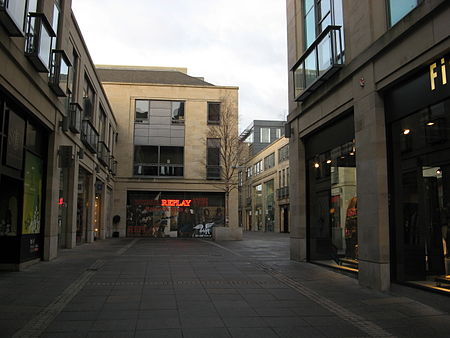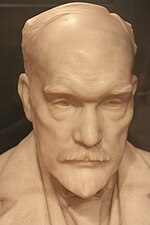Multrees Walk

Multrees Walk is a pedestrian shopping area off the east side of St. Andrew Square, Edinburgh, Scotland. Created in 2003 as part of a redevelopment, it links St Andrew Square and St James Shopping Centre and its shops sell luxury goods including clothing, stationery and handbags.Harvey Nichols, the department store, is the anchor of the development and has its main entrance on St. Andrew Square, but there is a smaller entrance on Multrees Walk. Multrees Walk, Harvey Nichols and Edinburgh Bus Station (which sits below 'Multrees Walk' and is accessed by escalators from St Andrew Square or from Elder Street) was designed by Edinburgh architects CDA.
Excerpt from the Wikipedia article Multrees Walk (License: CC BY-SA 3.0, Authors, Images).Multrees Walk
Multrees Walk, City of Edinburgh New Town/Broughton
Geographical coordinates (GPS) Address Nearby Places Show on map
Geographical coordinates (GPS)
| Latitude | Longitude |
|---|---|
| N 55.955133333333 ° | E -3.1915833333333 ° |
Address
Multrees Walk 6
EH1 3DQ City of Edinburgh, New Town/Broughton
Scotland, United Kingdom
Open on Google Maps











